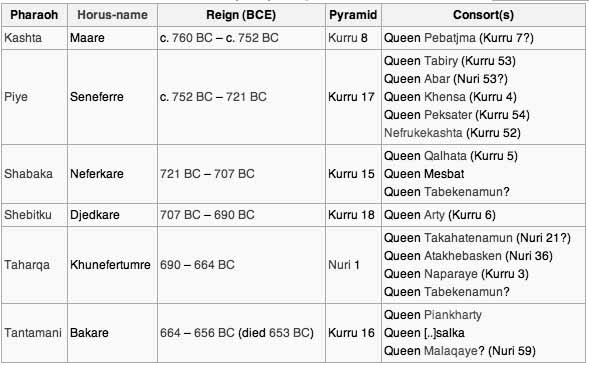
The twenty-fifth dynasty of Egypt, known as the Nubian Dynasty or the Kushite Empire, was the last dynasty of the Third Intermediate Period of Ancient Egypt.
The 25th dynasty was a line of rulers originating in the Nubian Kingdom of Kush and most saw Napata as their spiritual homeland. They reigned in part or all of Ancient Egypt from 760 BC to 656 BC The dynasty began with Kashta's invasion of Upper Egypt and culminated in several years of war with the Assyrians which was to result in the destruction of the Kushite Empire.
The 25th's reunification of Lower Egypt, Upper Egypt, and also Kush (Nubia) created the largest Egyptian empire since the New Kingdom. They ushered in an age of renaissance by reaffirming Ancient Egyptian religious traditions, temples, and artistic forms, while introducing some unique aspects of Kushite culture. It was during the 25th dynasty that the Nile valley saw the first widespread construction of pyramids (many in modern Sudan) since the Middle Kingdom. After Assyrian king Esarhaddon invaded Egypt and defeated the Nubians, they were succeeded by the Twenty-sixth dynasty of Egypt, the last native dynasty to rule Egypt before the Persian conquest.
The period starting with Kashta and ending with Malonaqen is sometimes called the Napatan Period. The later Kings from the twenty-fifth dynasty ruled over Napata, Meroe, and Egypt. The seat of government and the royal palace were in Napata during this period, while Meroe was a provincial city. The kings and queens were buried in El-Kurru and Nuri.
Alara, the first known Nubian king and predecessor of Kashta was not a 25th dynasty king since he did not control any region of Egypt during his reign. While Piye is viewed as the founder of the 25th dynasty, some publications may include Kashta who already controlled some parts of Upper Egypt. A stela of his was found at Elephantine and Kashta likely exercised some infuence at Thebes (although he did not control it) since he held enough sway to have his daughter Amenirdis I adopted as the next Divine Adoratrice of Amun there.

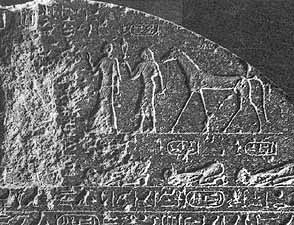
The twenty-fifth dynasty originated in Kush, or (Nubia), which is presently in Northern Sudan. The city-state of Napata was the spiritual capital and it was from there that Piye (spelled Piankhi or Piankhy in older works) invaded and took control of Egypt. Piye personally led the attack on Egypt and recorded his victory in a lengthy hieroglyphic filled stele called the "Stele of Victory." Piye revived one of the greatest features of the Old and Middle Kingdoms, pyramid construction. An energetic builder, he constructed the oldest known pyramid at the royal burial site of El Kurru and expanded the Temple of Amun at Jebel Barkal. Although Manetho does not mention the first king, Piye, mainstream Egyptologists consider him the first Pharaoh of the 25th dynasty. Manetho also does not mention the last king, Tantamani, although inscriptions exist to attest to the existence of both Piye and Tantamani.

After conquering Egypt, Piye simply went home to Nubia and never returned to Egypt. He is portrayed as a ruler who did not glory in the smiting of his adversaries, as did other kings, but rather preferred treaties and alliances. He left the rule of the country largely in the hands of his vassals, but recorded his victories on a stela (called the Victory Stela, now in the Egyptian Museum) at Napata. He left few monuments in Egypt, other than an expansion of theTemple of Amun at Thebes (current day Luxor). Later, Tefnakhte would again claim kingdom and as the founder of the 24th Dynasty, rule at least the western Delta. However, later successors to Piye would consolidate their control over Egypt, at least for a time.
Upon Piye's death, he was buried at El-Kurru, where he erected a small pyramid resembling the tall, narrow structures that had been built above many private tombs of Egypt's New Kingdom.
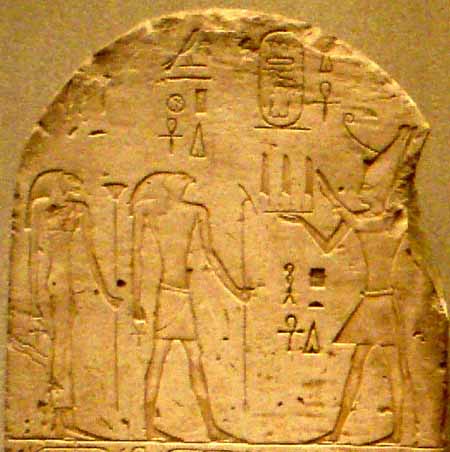
Shabaka (Shabataka) or Shabaka Neferkare, 'Beautiful is the Soul of Re', was a Kushite pharaoh of the Twenty-fifth dynasty of Egypt, between (721 - 707/706 or 716 - 702 BC) according to Peter Clayton.
Shabaka is thought to be the son of King Kashta and Pebatjma, although a text from the time of Taharqa could be interpreted to mean that Shabaka was a brother of Taharqa and hence a son of Piye.
Shabaka's Queen Consort was Qalhata, according to Assyrian records, a sister of Taharqa. Shabaka and Qalhata were the parents of King Tantamani and most likely the parents of King Shebitku as well. It is possible that Queen Tabakenamun was a wife of Shabaka. She is thought to be a wife of Taharqa by others. Shabaka's son Haremakhet became High Priest of Amun and is known from a statue and a fragment of a statue found in Karnak.A lady named Mesbat is mentioned on the sarcophagus of Haremakhet and may be his mother.
Shabaka is the father of at least two more children, but the identity of their mother is not known. Piankharty later becomes the wife of her (half-)brother Tamtamani. She is depicted on the Dream Stela with him. Isetemkheb H likely married Tantamani as well. She was buried in Abydos, Egypt.
Shabaka succeeded his brother Piye on the throne, and adopted the throne name of the 6th-dynasty ruler Pepi II. Shabaka's reign was initially dated from 716 BC to 702 BC by Kenneth Kitchen. However, new evidence indicates that Shabaka died around 707 or 706 BC because Sargon II (722-705 BC) of Assyria states in an official inscription at Tang-i Var (in Northwest Iran) - which is datable to 706 BC - that it was Shebitku, Shabaka's successor, who extradited Iamanni of Ashdod to him as king of Egypt.
This view has been accepted by many Egyptologists today such as Aidan Dodson, Rolf Krauss, David Aston, and Karl Jansen-Winkeln among others because there is no concrete evidence for coregencies or internal political/regional divisions in the Nubian kingdom during the Twenty-fifth Dynasty. All contemporary records suggest that the Nubian Pharaohs ruled Egypt with only a single king on the throne, while Taharqa states explicitly on one of his Kawa stelas that he assumed power only after the death of his brother, Shebitku.
Shabaka's reign is significant because he consolidated the Nubian Kingdom's control over all of Egypt from Nubia down to the Delta region. It also saw an enormous amount of building work undertaken throughout Egypt, especially at the city of Thebes, which he made the capital of his kingdom. In Karnak he erected a pink granite statue of himself wearing the twin crowns of Egypt. Shabaka succeeded in preserving Egypt's independence from outside foreign powers especially the Assyrian empire under Sargon II.
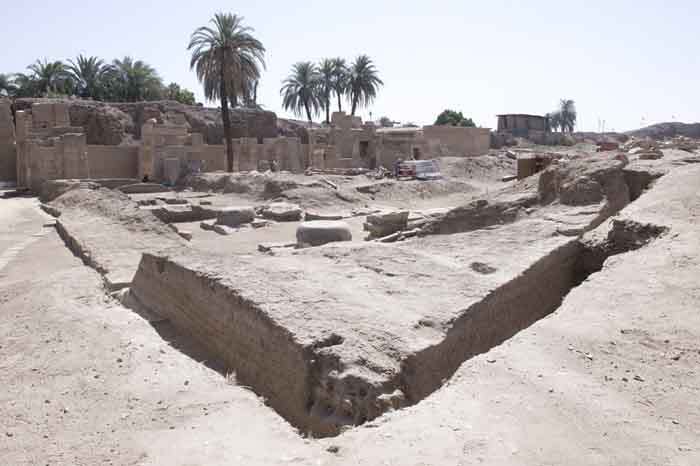
The most famous relic from Shabaka's reign is the Shabaka stone which records several Old Kingdom documents that the king ordered preserved. Also notable is the Shabaka Gate, a large stone door unearthed by archeologists in 2011 and believed to have guarded the room where the king's treasures were stored.
Despite being relative newcomers to Egypt, Shabaka and his family were immensely interested in Egypt's past and the art of the period reflects their tastes which harked back to earlier periods. Shabaka would grant refuge to king Iamanni of Ashdod after the latter fled to Egypt following the suppression of his revolt by Assyria in 712 BC.
Shabaka conquered the entire Nile valley, including Upper and Lower Egypt, around 710 BC. Shabaka had Bocchoris of the preceeding Sais dynasty burned to death for resisting him. After conquering Lower Egypt, Shabaka transferred the capital to Memphis. Shabaka restored the great Egyptian monuments and returned Egypt to a theocratic monarchy by becoming the first priest of Amon. In addition, Shabaka is known for creating a well preserved example of Memphite theology by inscribing an old religious papyrus into the Shabaka Stone.

The Shabaka Stone is a relic from the Nubian Twenty-fifth Dynasty of Egypt incised with an important Egyptian religious text, the Memphite Theology. It is a stone slab measuring 66 cm in height and 137 cm in width. The text claims to contain the surviving content of a worm-ridden, decaying papyrus that was found as pharaoh Shabaka was inspecting the temple of Ptah in Memphis, Egypt.
Shabaka, concerned about the loss of the information on the papyrus, had the rest of the text written into this stone. However, in later years, the stone was used as a millstone and so some of the hieroglyphics were damaged. Nevertheless, it has been a fruitful source of insight into the culture and religious doctrines of the ancient Egyptians.
The Shabaka Stone is also noteworthy in that it places Ptah as the center of existence and as the creator god. It is the principal surviving source of these traditions about Ptah.
Shabaka is assumed to have died in his 15th regnal year based on BM cube statue 24429, which is dated to Year 15, II Shemu day 11 of Shabaka's reign.From the evidence of the Tang-i Var inscription, Shabaka was already dead by 707 or 706 BC. He was buried in a pyramid at el-Kurru and was succeeded by his nephew Shebitku, Piye's son, following the Kushite tradition of succession from brother to brother, to son of the first brother. Shebitku would eventually be succeeded by Tantamuni - a son of Shabaka.
Recent research by Dan'el Kahn suggests that Shebitku was king of Egypt by 707-706 BC. This is based on evidence from an inscription of the Assyrian king Sargon II, which was found in modern day Northwestern Iran (then a colony of Assyria) and dated to 706 BC. This inscription calls Shebitku the king of Meluhha, and states that he sent back to Assyria a rebel named Iamanni in handcuffs. Kahn's arguments have been widely accepted by many Egyptologists including Rolf Krauss, and Aidan Dodson and other scholars at the SCIEM 2000 (Synchronization of Civilizations of the Eastern Mediterranean in the Second Millennium B.C.) project with the notable exception of Kenneth Kitchen and Manfred Bietak at present.
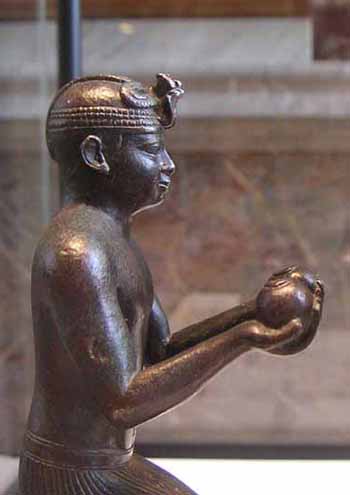
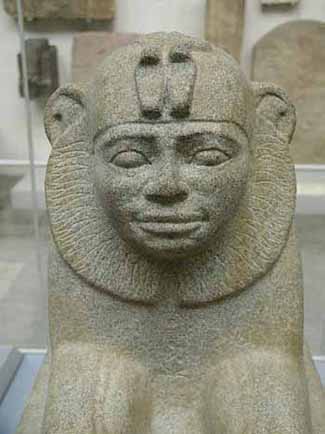
Taharqa was a pharaoh of the Ancient Egyptian 25th dynasty and king of the Kingdom of Kush, which was located in Northern Sudan. Taharqa was the son of Piye, the Nubian king of Napata who had first conquered Egypt. Taharqa was also the cousin and successor of Shebitku. The successful campaigns of Piye and Shabaka paved the way for a prosperous reign by Taharqa. Taharqa's reign can be dated from 690 BC to 664 BC.

Evidence for the dates of his reign are derived from the Serapeum stela, catalog number 192. This stela records that an Apis bull who was born and installed (4th month of Peret, day 9) in Year 26 of Taharqa died in Year 20 of Psammetichus I (4th month of Shomu, day 20), having lived 21 years. This would give Taharqa a reign of 26 years and a fraction, in 690-664 B.C. Taharqa explicitly states in Kawa Stela V, line 15, that he succeeded Shebitku with this statement: "I received the Crown in Memphis after the Falcon (ie: Shebitku) flew to heaven."
Although Taharqa's reign was filled with conflict with the Assyrians, it was also a prosperous renaissance period in Egypt and Kush. When Taharqa was about 20 years old, he participated in a historic battle with the Assyrian emperor Sennacherib at Eltekeh.
At Hezakiah's request, Taharqa and the Egyptian/Kushite army managed to stall the Assyrian advance on Jerusalem. Sennacherib abandoned the siege and returned home. Thus, Taharqa saved Jerusalem and the Hebrew society from destruction, a pivotal point in world and Hebrew history. The might of Taharqa's military forces was established at Eltekeh, leading to a period of peace in Egypt.
During this period of peace and prosperity, the empire flourished. In the sixth year of Taharqa's reign, the prosperity was also aided by abundant rainfall and a large harvest. Taharqa took full advantage of the lull in fighting and abundant harvest. He restored existing temples, built new temples, and built the largest pyramid in the Napatan region. Particularly impressive were his additions to the Temple at Karnak, new temple at Kawa, and temple at Jebel Barkal.
Scholars have identified Taharqa with Tirhakah, king of Ethiopia, who waged war against Sennacherib during the reign of King Hezekiah of Judah (2 Kings 19:9; Isaiah 37:9) and drove him from his intention of destroying Jerusalem and deporting its inhabitants - a critical action that, according to Henry T. Aubin, has shaped the Western world.
The events in the Biblical account are believed to have taken place in 701 BC, whereas Taharqa came to the throne some ten years later. A number of explanations have been proposed: one being that the title of king in the Biblical text refers to his future royal title, when at the time of this account he was likely only a military commander.
According to Francis Llewellyn Griffith, an attractive hypothesis is to identify the Pharaoh as Taharqa before his succession, and Sethos as his Memphitic priestly title, "supposing that he was then governor of Lower Egypt and high-priest of Ptah, and that in his office of governor he prepared to move on the defensive against a threatened attack by Sennacherib. While Taharqa was still in the neighbourhood of Pelusium, some unexpected disaster may have befallen the Assyrian host on the borders of Palestine and arrested their march on Egypt." (Stories of the High Priests of Memphis: The Sethon of Herodotus and the Demotic Tales of Khamuas (1900), p. 11.
Herodotus, the Greek historian who wrote his Histories ca. 450 BC, speaks of a divinely-appointed disaster destroying an army of Sennacherib, which was defeated by Sethos after praying to the gods. The gods sent "a multitude of field-mice, which devoured all the quivers and bowstrings of the enemy, and ate the thongs by which they managed their shields." This is commemorated in "a stone statue of Sethos, with a mouse in his hand, and an inscription to this effect - 'Look on me, and learn to reverence the gods.'
The two snakes in the crown of pharaoh taharqa describes that he was the king of both the lands, Egypt and Nubia. It described his power and he was the greatest king of his time.
It was during his reign that Egypt's enemy Assyria at last invaded Egypt. Esarhaddon led several campaigns against Taharqa, which he recorded on several monuments. His first attack in 677 BC, aimed to pacify Arab tribes around the Dead Sea, led him as far as the Brook of Egypt. Esarhaddon then proceeded to invade Egypt proper in Taharqa's 17th regnal year, after Esarhaddon had settled a revolt at Ashkelon.
Taharqa defeated the Assyrians on that occasion. Three years later in 671 BC the Assyrian king captured and sacked Memphis, where he captured numerous members of the royal family. Taharqa fled to the south, and Esarhaddon reorganized the political structure in the north, establishing Necho I as king at Sais. Upon Esarhaddon's return to Assyria he erected a victory stele, showing Taharqa's young son Ushankhuru in bondage.
It is clear from historical accounts that Taharqa was one of the greatest Ancient Egyptian pharaohs. Taharqa was described by the Ancient Greek historian Strabo as having "Advanced as far as Europe", and (citing Megasthenes), even as far as the Pillars of Hercules in Spain. This feat alone would count him among the greatest military tacticians of the ancient world.
Later Spanish legendary chronicles (eg. Florian de Ocampo's Cronica General, published 1553) also identify "Tarraco" as general of an Ethiopian army that supposedly campaigned in Spain in the 7th century BC before his becoming Pharaoh. This event has also been held to account for the name of the Spanish city of Tarraco (now Tarragona).
In biblical depictions, he is the saviour of the Hebrew people, as they are being besieged by Sennacherib (Isaiah 37:8-9, & 2 Kings 19:8-9). In modern times, the Sudanese people consider Piye and Taharqa as historical figures and regarded more than the other pharaohs from the Twenty-fifth dynasty of Egypt.
He was the son of King Shabaka and the nephew of his predecessor Taharqa. In some sources he is said to be the son of Shebitku. Assyrian records call Tantamani a son of Shabaka and refer to Qalhata as a sister of Taharqa. Some Egyptologists interpreted the Assyrian text as stating that Tantamani was a son of Shebitku, but as he was most likely a son of Shabaka himself, it is now more common to consider Tantamani a son of Shabaka.
Once the Assyrians had appointed Necho I as king and left Egypt, Tantamani marched down the Nile from Nubia and reoccupied all of Egypt including Memphis. Necho I, the Assyrians' representative, was killed in Tantamani's campaign. In reaction, the Assyrians returned to Egypt in force, defeated Tantamani's army in the Delta and advanced as far as south as Thebes, which they sacked. The Assyrian reconquest effectively ended Nubian control over Egypt although Tantamani's authority was still recognised in Upper Egypt until his 8th Year in 656 BC when Psamtik I's navy peacefully took control of Thebes and effectively unified all of Egypt.
Thereafter, Tantamani ruled only Nubia (Kush). Tantamani died in 653 BC and was succeeded by Atlanersa, a son of Taharqa. He was buried in the family cemetery at El-Kurru. The archaeologist Charles Bonnet discovered the statue of Tantamani at Kerma (now called Doukki Gel) in 2003.
-
Tanwetamani (Assyrian Tandamane or Tantamani, Greek Tementhes, also known as Tanutamun) was Egypt's last ruler of the 25th Dynasty as well as the last Nubain (Kushite) Ruler, ruling from about 664 to 657 BC. We are told his throne name was Ba-ka-re, meaning "Glorious is the Soul of Re". He succeeded Taharqa, though he was probably the son of that king's sister, queen Qalhata. His succession to the throne is recorded in a record known as the Dream Stela, not to be confused with that of Tuthmosis IV. It was discovered along with the Victory Stela of Piye at Gebel Barkal in 1862, and now resides in the Nubian Museum in Aswan.
Tanwetamani may have served as a co-regent with Taharqa, but his parentage and family relationships are difficult. From his stela we find depicted two women, one of whom is referred to as "the royal sister, the Mistress of Egypt, Qalhata", while the other is "the royal sister, the Mistress of Ta-Seti, Pi-(ankh)-Arty". An analysis of the text associated with the stela would seem to indicate that Qalhata was Tanwetamani's mother, while the second woman was his wife. The fact that Qalhata was his mother is also supported by her tomb at Nuri in the modern Sudan, where she is given the title of "King's Mother". Foundation deposits also show that the tomb was build during the reign of Tanwetamani.
Most recent histories which discuss the 25th dynasty identify Tanwetamani (Urdamani) as a son of Shabataka, Taharqa's brother, not of his uncle Shabaka as the Rassam cylinder annalist appears to suggest.. The errant orthography can be explained by the fact that the name Shabaka is more properly vocalized as Shebitku. If so then the "t" in the doubled consonant "tk" in the name of Shebitku would easily be lost to a foreign ear. The annalist wrote what he heard and recorded Shabataku instead of Shabitku.
In the narrative of his stela, the king is referred to as "lord of valor like Montu, great of strength like a fierce-eyed lion". It goes on to explain that in the first year of his reign, Tanwetamani had a dream of two serpents, one on his right hand and one on his left. After waking, the king's advisors interpreted the dream, saying that, "the southland is already thin, seize the northland". Hence, he should bring Egypt back under control of the Kushite empire. After this passage, another states that Tanwetamani then "rose on the throne of Horus", a term which may be interpreted as his having ascended the throne. This is the primary evidence we have for his co-regency with Taharqa, but we are also told that Assyrian text provides that he did not do so until after Taharqa's death.
We assume that at the time of his accession, Tanwetamani was most likely inside Egypt proper, for the text on the stela states that "he went from where he was to Napata (Nubia), and there was none who stood up to oppose him". Hence, he went to the Temple of Amun and was acknowledged as god and king.
Other text within the stela confirms that he was at this time in control of southern, or Upper Egypt, but at the very least was not in control of parts of the north. After ascending the throne, he went north from Nubia, first stopping at Elephantine where he participated in a festival procession of the God Khnum. From there he sailed further north to Waset (Thebes) where he once again participated in the festival.
Nekau of Sais may have been killed in this battle, but his son, Psamtek, who was loyal to the Assyrians fled to Asia. After this victory, Tanwetamani honored the God, Ptah-Sokar and his wife Sakhmet in the great temple of Memphis, and afterwards ordered the building of a chapel dedicated to Amun at Napata in Nubia. The temple, we know, was to be built of stone overlaid with gold, sections of cedar wood and the leaves of the door plated with electrum. This temple may be associated with parts of the great temple of Amun at Gebel Barkal.
Tanwetamani apparently spared the lives of the Delta princes, sending them home, but this victory was short lived.
The "door posts of the temple" may refer to the great gate of electrum erected by Tuthmosis IV and renewed by Shabaka. This attack on Thebes was one of the great tragedies of the ancient world, and was remembered by a Jewish prophet fifty years later.
Interestingly, Tanwetamani seems to have continued to be acknowledged as pharaoh in Thebes until his eighth year. There are inscriptions at Luxor that date the installation of priests by his name and the Kushites still maintained a large official presence in the city. Piye's daughter, Shepenwepet II we know as God's Wife of Amun, with Taharqa's daughter, Amenirdis II as her designated successor. Even in year none of Tanwetamani's reign, his cousin remained the High Priest of Amun, and we have other evidence of the Kushite's continued power within the region.
It is possible that Tanwetamani one again tried to assert control over Egypt, though the evidence is slight. In a brief passage in the work of Polyaenus from a 2nd Century (AD) text, we hear of a later battle near the temple of Isis at Memphis that may have involved Tanwetamani. He states that Psamtik, aided by Carian mercenary troops, defeated "Tementhes". A few Egyptologist believe, based on a hellenistic Jewish source, that Tanwetamani may have even retaken Memphis, but much of this is conjecture.
In any case, Tanwetamani probably continued to rule in Nubia for at least a few more years, and was buried in the necropolis at Nuri.
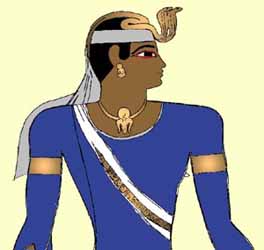
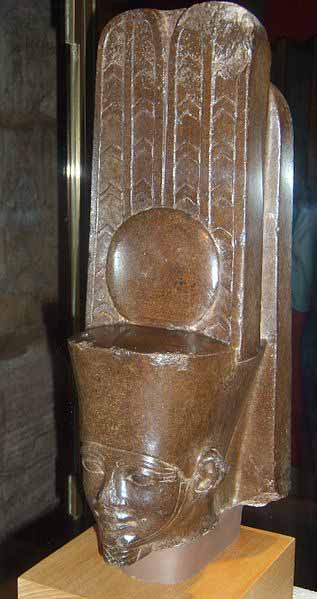
Tantamani (Assyrian pronunciation, identical to Tandaname) or Tanwetamani (Egyptian) or Tementhes (Greek) (d. 653 BC) was a Pharaoh of Egypt and the Kingdom of Kush located in Northern Sudan and a member of the Nubian or Twenty-fifth dynasty of Egypt. His prenomen or royal name was Bakare which means "Glorious is the Soul of Re."